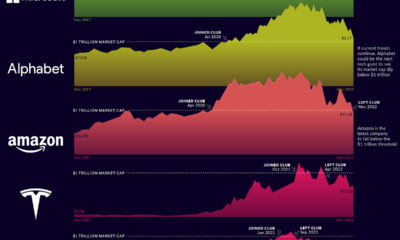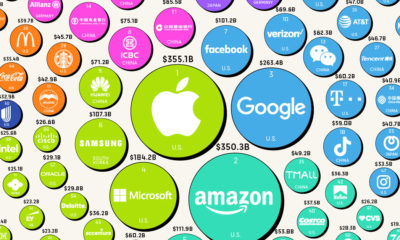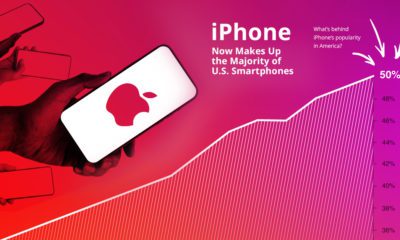Why Didn’t Apple Use Sapphire Glass in the iPhone 6?
It is a longstanding tradition for the rumour mill to heat up before a highly anticipated Apple product launch. With each event getting more attention than the previous, it is no surprise that sometimes the hype gets out of hand.
This has led to a new tradition: the entire internet griping about which rumours and leaks that Apple was unable to fulfill with their latest product.
The case was no different for the iPhone 6 and iPhone 6 Plus launch yesterday at the Flint Center in Cupertino. Prior to launch, the most persistent buzz about the iPhone 6 was that it would be the first major smartphone to adopt sapphire glass displays rather than use Gorilla Glass, the industry standard.
However, as the launch got closer and closer, it became more and more doubtful that sapphire glass would be used – even despite Apple’s $578 million investment in producing the material. Reports were that the Arizona plant was still slow to ramp up, and it also surfaced that supply chain insiders had not seen enough orders go through.
So why didn’t Apple use sapphire glass in the iPhone 6?
The first reason has to do with the sapphire glass itself. While the material is almost as hard to scratch as a diamond, it turns out that any small impurity in the material can severely compromise its structural integrity. GT Advanced Technologies, the maker that Apple has partnered with, would have had to ramp up production to unprecedented levels while producing flawless material for an estimated 80 million iPhones.
What makes this even more difficult is the way that synthetic sapphires are made. To grow each crystal, aluminum oxide must be heated to 3,700°F in a controlled furnace. Then, the crystal is grown out in a boule and cut with diamond-laced saws. This is a very intricate and involving process, which is much more difficult to ramp up than an industrial scale glass operation such as that of Corning and its Gorilla Glass.
The second big reason that made sapphire glass difficult to integrate within a short timeline is that the economies of scale are not yet there to make the price worthwhile for Apple customers. There are multiple estimates on the price differential, but one estimate puts sapphire as 10x more expensive than Gorilla Glass.
That could be brought down significantly with streamlined production, likely to at least the 3-4x range. In any case, to keep the same margins Apple has, the cost would have to be passed to the customer. Is it worth $100+ to the end user to have more scratch resistant glass?
Maybe some would agree, but Apple believes that it definitely wasn’t worth the risk just yet.
on But fast forward to the end of last week, and SVB was shuttered by regulators after a panic-induced bank run. So, how exactly did this happen? We dig in below.
Road to a Bank Run
SVB and its customers generally thrived during the low interest rate era, but as rates rose, SVB found itself more exposed to risk than a typical bank. Even so, at the end of 2022, the bank’s balance sheet showed no cause for alarm.
As well, the bank was viewed positively in a number of places. Most Wall Street analyst ratings were overwhelmingly positive on the bank’s stock, and Forbes had just added the bank to its Financial All-Stars list. Outward signs of trouble emerged on Wednesday, March 8th, when SVB surprised investors with news that the bank needed to raise more than $2 billion to shore up its balance sheet. The reaction from prominent venture capitalists was not positive, with Coatue Management, Union Square Ventures, and Peter Thiel’s Founders Fund moving to limit exposure to the 40-year-old bank. The influence of these firms is believed to have added fuel to the fire, and a bank run ensued. Also influencing decision making was the fact that SVB had the highest percentage of uninsured domestic deposits of all big banks. These totaled nearly $152 billion, or about 97% of all deposits. By the end of the day, customers had tried to withdraw $42 billion in deposits.
What Triggered the SVB Collapse?
While the collapse of SVB took place over the course of 44 hours, its roots trace back to the early pandemic years. In 2021, U.S. venture capital-backed companies raised a record $330 billion—double the amount seen in 2020. At the time, interest rates were at rock-bottom levels to help buoy the economy. Matt Levine sums up the situation well: “When interest rates are low everywhere, a dollar in 20 years is about as good as a dollar today, so a startup whose business model is “we will lose money for a decade building artificial intelligence, and then rake in lots of money in the far future” sounds pretty good. When interest rates are higher, a dollar today is better than a dollar tomorrow, so investors want cash flows. When interest rates were low for a long time, and suddenly become high, all the money that was rushing to your customers is suddenly cut off.” Source: Pitchbook Why is this important? During this time, SVB received billions of dollars from these venture-backed clients. In one year alone, their deposits increased 100%. They took these funds and invested them in longer-term bonds. As a result, this created a dangerous trap as the company expected rates would remain low. During this time, SVB invested in bonds at the top of the market. As interest rates rose higher and bond prices declined, SVB started taking major losses on their long-term bond holdings.
Losses Fueling a Liquidity Crunch
When SVB reported its fourth quarter results in early 2023, Moody’s Investor Service, a credit rating agency took notice. In early March, it said that SVB was at high risk for a downgrade due to its significant unrealized losses. In response, SVB looked to sell $2 billion of its investments at a loss to help boost liquidity for its struggling balance sheet. Soon, more hedge funds and venture investors realized SVB could be on thin ice. Depositors withdrew funds in droves, spurring a liquidity squeeze and prompting California regulators and the FDIC to step in and shut down the bank.
What Happens Now?
While much of SVB’s activity was focused on the tech sector, the bank’s shocking collapse has rattled a financial sector that is already on edge.
The four biggest U.S. banks lost a combined $52 billion the day before the SVB collapse. On Friday, other banking stocks saw double-digit drops, including Signature Bank (-23%), First Republic (-15%), and Silvergate Capital (-11%).
Source: Morningstar Direct. *Represents March 9 data, trading halted on March 10.
When the dust settles, it’s hard to predict the ripple effects that will emerge from this dramatic event. For investors, the Secretary of the Treasury Janet Yellen announced confidence in the banking system remaining resilient, noting that regulators have the proper tools in response to the issue.
But others have seen trouble brewing as far back as 2020 (or earlier) when commercial banking assets were skyrocketing and banks were buying bonds when rates were low.














